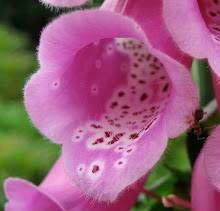
I have been working on the twin aspects of genetics teaching: one, it has some highly technical, theoretical aspects, but it also has a very human side as we see the challenges that some people are born with and how they can be faced and managed.
My project will address both of these aspects of genetics teaching and will incorporate a wide range of technologies.
Teaching genetics vocabulary:
Enhanced by interactive PPT with understanding checks embedded every few terms so that students can apply the terms and get immediate feedback
Karyotyping and common genetic disorders:
Students will benefit from selected visuals shared on the smartboard that are associated with chromosomal appearance and arrangement (drag-and-drop being especially relevant), Punnett grid set-up, and also with visuals and videos that make the symptoms and appearance of different mammalian and human genetic disorders more relatable.
Humanization of rare genetic disorders (the heart of the project):
By accessing support groups for rare genetic conditions students will be able to read first-hand accounts of what it is like for parents, families, and those diagnosed with different genetic conditions. They may encounter anguish, humor, anger, kindness and more as they read these stories. Hopefully it will build their empathy and help them see both the fundamental human commonalities as well as the unique challenges faced by families coping with Tay-Sachs, Huntington's, sickle-cell anemia, or any of the hundreds of other conditions they may explore.
It is even possible, though it will not be required, that they may contact one of these support groups if it seems appropriate and not intrusive.
Presentations:
Students will have free choice of format when making their presentation about the genetic disorder they've explored. This will allow them to show their creativity and use a type of organization and presentation method that is helpful to them.
Peer support:
Students will be using forums on panthernet to ask questions, respond to others' work, and help each other with the varied aspects the genetics unit.
By using these technologies in a variety of ways, I hope that the genetics unit will hold the attention of the students by showing them amazing facets of humanity, engaging them in active learning, empowering them as explorers, and drawing out their sense of empathy in a way that will make them more caring and sensitive global citizens. This may be too lofty a goal, but it is one worth striving for.

No comments:
Post a Comment